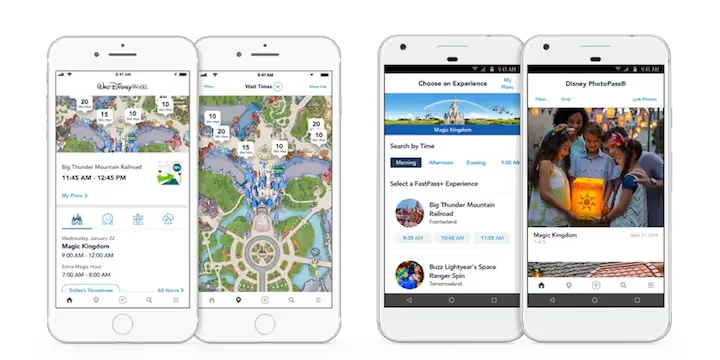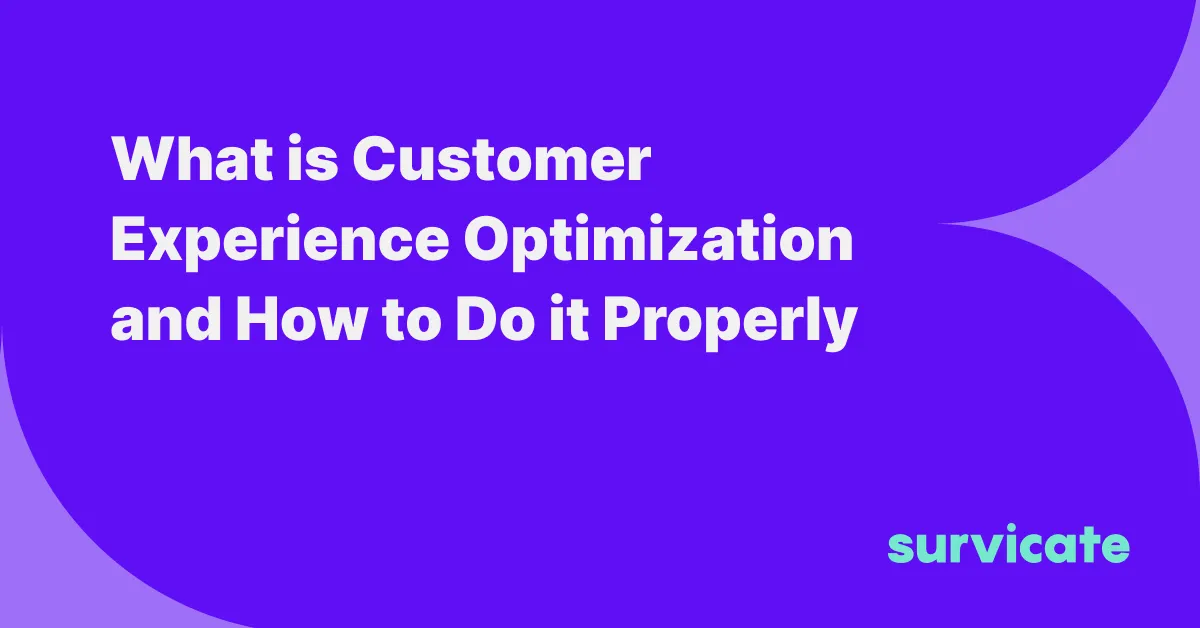About 30 years ago, if customers wanted to reach you, they had two choices:
- call you on the phone
- walk inside your premises.
Today, the situation is different - they can still call, but apart from it they can email you, sms you, reach out using live chat, social media and much, much more.
While that’s great for everybody, it also means one thing: Customer expectations are getting higher(!) so, the need for online presence across all these available channels becomes the must for your business.
Just this year, Salesforce found that 73% of customers expect better personalization as technology advances.
Luckily, there’s a solution - omnichannel.
This article will guide you through the following areas:
- what is omnichannel customer experience
- how omnichannel differs from multichannel
- some best practices to get started with customer experience analytics

What is omnichannel customer experience
Omnichannel customer experience is advertising, selling, and assisting with products across a variety of different communication channels, while treating the entire customer experience as a journey, rather than separate interactions.
Sounds complex? Here’s an example of the flow.
A customer lands on your website. They snoop around and register for the free trial of your SaaS product. Upon signing up, they ask about different pricing options and add-ons through your live chat. The next day, they send an email. At the end, you can use your favorite customer experience tool that tells you about the live chat message from the customer that you got the other day.
So, you pick up the conversation where you left off and tell the customer that your team talked to them yesterday about pricing and that you can explain more. And most importantly, the customer is happy since it feels like talking to the same person across multiple channels.
The next day, they reach out by phone to get a better idea of how they can book a demo. The customer support rep says that the info they provided in live chat and email is enough for them to determine what kind of pricing plan would best suit their needs.
The chances of that free trial becoming a paid customer just became much higher. There are two reasons for that. One, you gave them a fully personalized customer experience. Two, the transition between the different customer interactions was seamless, improving their customer satisfaction and showing them you care about them.
That’s the bottom line - omnichannel customer experience allows companies to consistently communicate with their customers through a range of communication channels.
What channels belong in omnichannel communication?
In Latin, “Omni” means all. This does not mean that you have to use all channels under the sun to provide an omnichannel, optimized customer experience. Some examples of channels to use include:
- Emails
- Live chat
- Phone
- Social media inboxes
- SMS/messaging platforms
- Mobile app
- Communication within brick and mortar stores
- And others
Instead of focusing on all of them at once, pick those where your customers are present and provide a seamless experience across different touchpoints, even throughout online and offline channels.

Omnichannel vs. multichannel customer experience
You’ll hear the terms omnichannel and multichannel customer experience together quite often so you might be tempted to lump them in the same category. However, the difference in names is there for a reason and there are noticeable differences in the approach to customer experience transformation and customer interactions.

It’s all in the name: multi = multiple and omni = all of the channels.
Before we go into details, it’s worth saying that omnichannel customer experience is the approach you want to go with. If you’re interested in learning about the differences in detail, read on.
Multichannel sends the same message to all channels, omnichannel customer experience picks up the same message throughout the different channels
Let us elaborate. Multichannel means that you can contact your favorite brand through Facebook messages or email with ease, for example. However, you’ll be starting the conversation from scratch each time.
Both in multichannel and omnichannel, it’s equally easy for a customer to get in touch with your brand.
However, while in omnichannel communication, once the conversation has started it is continued in any other channel, in multichannel communication, a customer has to repeat themselves and start all over again if they jump between various channels.
On the other hand, omnichannel allows you to continue a conversation you started through email and continue it through Facebook messages with your company profile.
The difference may only seem subtle, but it means that your customers can feel that you are devoted to their specific case rather than starting as strangers each time.
Multichannel focuses on the product, omnichannel focuses on the customer
The main aim of multichannel customer experience is to provide consistent customer experience across channels and make it easier to go for conversions.
On the other hand, omnichannel customer experience capitalizes on creating a customer experience that flows throughout multiple channels. The main value is not in the immediate sale but in the strengthened bond with the customers and improved brand experience. This can result in higher customer loyalty and better customer satisfaction.
In other words, multichannel is focused on short-term customer experience benefits, while omnichannel goes for the long run.
So, which one is better?
If your main aim is to make it easier for customers to purchase and get in touch with you, multichannel is the name of the game. However, if you want to wow your customers with a seamless customer experience that picks up where they left off every time through multiple channels, omnichannel is the approach you want to take.
The top benefits of omnichannel customer experience
This all sounds fine and dandy, but is there any practical benefit to building an omnichannel presence for your brand? Yes, there are in fact multiple upsides to building a uniform presence across channels, and here are some of them—the numbers speak for themselves.
Better customer lifetime value
It’s no secret that happier customers tend to stay longer. According to research, companies with a stronger omnichannel customer experience approach retain 89% of their customers, compared to just 33% of those with a weak omnichannel customer approach.
More orders through omnichannel communication
There’s research out there proving that customers that go through just one communication channel order less compared to those that go through more of them. More specifically, customers that go through three or more channels in an omnichannel approach have a 494% higher order rate compared to those from one channel.
More conversions with omnichannel
The results you achieve will depend on many factors. However, it turns out that leveraging SMS is particularly useful as using SMS in your omnichannel approach increases your chances of conversion by 429%. This can be incredibly efficient for your B2B customer experience.
How to build an omnichannel customer experience
Now that you know what omnichannel is and what it can bring to your business, let’s take some practical steps to get you started with your omnichannel strategy and improve your customer satisfaction, among other things.
Map out your customer journey
When you think about it, there is a limited number of combinations of steps that customers take on their journey from mere visitors to loyal customers or brand ambassadors. Through each step of the customer experience lifecycle, there is a new digital touchpoint where a customer interacts with your brand in some way.
As you start creating your omnichannel customer experience strategy, map out those touchpoints. Track when they happen, through which channels, and what the messages are. Once you’re done, you’ll have a clear overview of your sales funnel and more importantly, a clear vision of your customer journey.
You’ll need this info when selecting the tools and channels you need for the omnichannel approach. As an added bonus, you might find some leaky holes in your funnel that you can fix on the fly.
Involve the entire company across different departments
Omnichannel experience is not a simple matter of customer service covering all fronts. Since the experience needs to be smooth, your entire team needs to be involved. For starters, they should all be familiar with the customer journey map (as outlined above) and the steps visitors take before becoming customers.
That way, the following can happen:
- Marketing adjusts the messaging and positioning on the website (after collecting website feedback), landing pages, and live chat
- Customer support knows what kind of marketing content prompted the customer to reach out through a specific channel
- Sales knows the exact benefits to mention depending on the point of the customer journey and the type of communication they had
- Customer success knows what kind of product the customer bought and what kind of interactions they previously had so they can better help the customer succeed with using the product, while they are in the product.
As you can see, it’s a team effort that benefits not just the customer, but will also ramp up productivity across your departments.
Measure and improve
Omnichannel does work but it won’t have the same success rate for everyone. Especially if you’ve just mapped out your customer journey and you have no benchmarks for success, it’s a superb idea to track everything but measure what matters. You’ll want to answer questions such as:
- What is the most common channel where customers start a conversation with you?
- How many interactions do they typically have with your team?
- At which point do they convert into a paid customer?
- How long is the typical customer journey?
- Which of your channels get used the least?
- Which channels are your customers happiest with?
Your tech stack should be able to give you these insights relatively easily. However, it’s also a great idea to find out how your customers feel using something like a CES survey.
Examples of great omnichannel customer experience in practice
Omnichannel works for a variety of industries and use cases. Here are some that may help you get inspired and started today.
Value City Furniture increases offline purchases
If you ever shopped around for any item online, you know the situation - you like how it looks on the website, but you’re not sure what it’s like in person. Value City Furniture knew well that this happens all the time, so they partnered up with CloudTags to create an app for omnichannel customer experience.

The app allows customers to make wishlists of the furniture they want to buy so that when they walk into a physical store, they can see what they want to buy and get more info. The end result? Customer engagement while shopping increased by 55%.
This is a perfect example of an omnichannel customer experience as it starts online and moves seamlessly into the physical world.
Disney makes it effortless to have fun with your family
The truth is that Disney as a brand needs very little advertising but they’re the kings of omnichannel marketing and customer experience. Before even setting foot in Disneyworld, you can download the My Disney Experience App to plan your journey beforehand. Learn the attractions you can visit, the rides you can take and how long you’re expected to wait in front of each.

The app also lets you use your mobile device (or smartwatch) to enter different facilities at the park. If you want something more on-brand, you can grab a Disney MagicBand which goes around your wrists and works as a key card for different facilities too.
The customer not only has access to all data more quickly and conveniently but Disney can also collect countless customer data points without lifting a finger… All while increasing customer engagement and profits.
Wrapping up
As customer expectations increase every year, it’s no longer enough to do the same old things and be surprised at the same poor results. Omnichannel customer experience is the future and since the technology behind it is widely available, customers will no longer prefer but actually demand it in the years to come.
If you’re willing to take that first step in becoming more customer-centric today, you need a professional tool to feel the pulse of your customers. Sign up for Survicate's 10-day free trial and get access to all of the Best plan features today!








.webp)


.webp)


.svg)

.svg)



